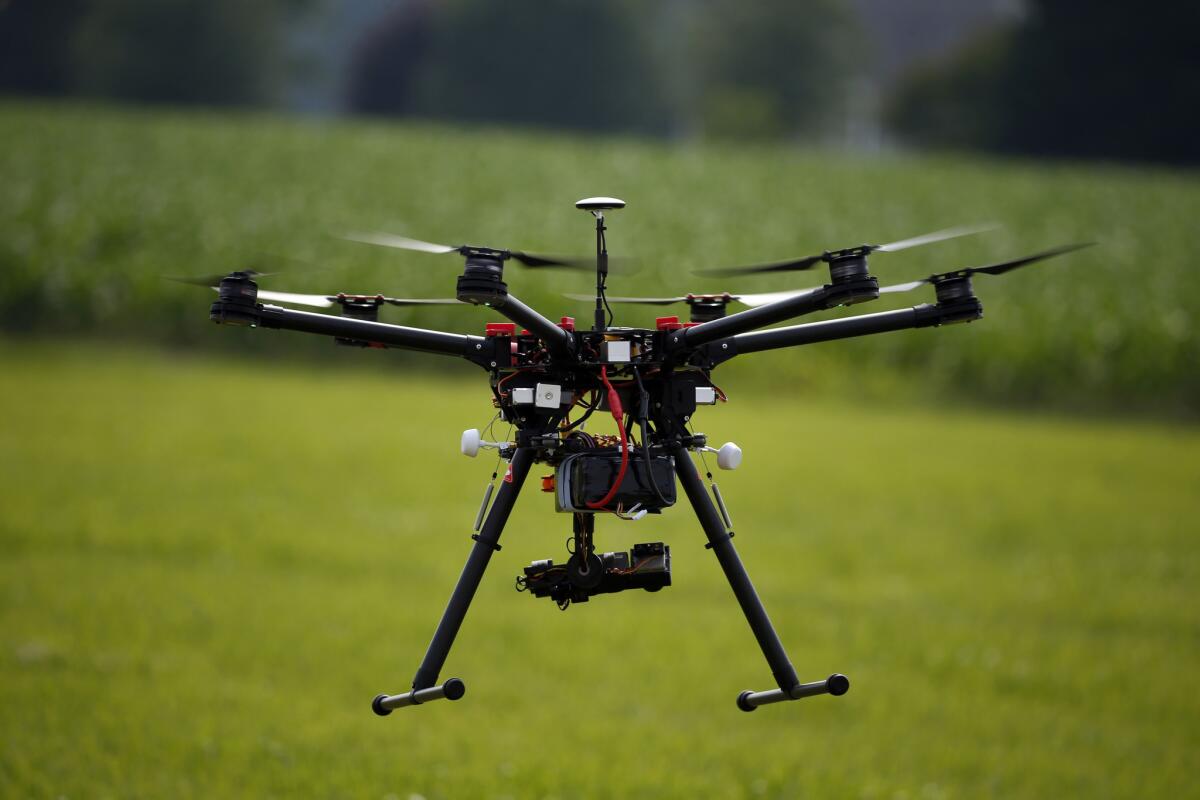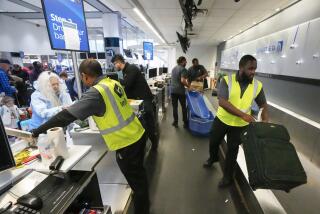Small commercial drones cleared for takeoff

- Share via
Flying a drone for commercial purposes will no longer require a pilot’s license, the Federal Aviation Administration announced in new rules released Tuesday.
Drones flown in for-profit uses will no longer require a special permit so long as they weigh no more than 55 pounds, soar no higher than 400 feet and fly no closer than 400 feet from buildings or structures, the guidelines stipulate.
Previous rules required commercial drone operators to have a pilot’s license and apply for an FAA waiver – a tedious process believed to have steered many businesses to use drones without proper permission.
The new regulation, which takes effect in August, will allow anyone over the age of 16 to fly a commercial drone so long as they apply for a remote pilot certificate, which requires passing an aeronautics test at an FAA-approved facility and undergoing a background check.
That threshold is far lower than a pilot’s license – a move likely to encourage greater commercial use of drones, industry experts predict.
“It’s been a long time coming, and [the] industry has been very eager to see this,” said Gretchen West, senior advisor for the law firm Hogan Lovells and the co-executive director for the Commercial Drone Alliance advocacy group.
Photographers may be the biggest beneficiaries of the rule change.
“That opens up the door for anyone that’s a photographer or a videographer who wants to add drone photography to their bag of tricks,” said Colin Snow, a drone analyst at Skylogic Research.
But the rules did little to address privacy concerns or the use of drones for deliveries.
Because the regulations require drones remain within a pilot’s line of sight, there’s little likelihood Amazon will use them for shipments any time soon.
The FAA is currently testing ways to govern drones beyond the line of sight, but considering Tuesday’s rules took nearly a decade to draft, it could be a while before delivery by drone is realistic.
“There needs to be more experience, so that will take some time,” said Philip Finnegan, the director of corporate analysis at the Teal Group, a company that studies the aerospace industry.
Analysts believe the new rules mean companies tinkering with drone deliveries will adopt a wait-and-see policy.
“The idea of getting a package delivered by drone has a lot of sex appeal to customers … [but it’s] going to take the sizzle off the steak for a while because it may not be possible for another year or two,” said Britt Beemer, the founder of America’s Research Group, a consumer analyst company. “It all depends on what the regulations are going to be in the future.”
While many drone advocates voiced support for the new rules, some criticized the way they establish a divide between hobbyists and commercial drone pilots.
“A hobbyist taking a picture with a [drone] presents no more of a risk than a professional photographer doing the same,” the nonprofit Information Technology and Innovation Foundation wrote in a statement.
alexander.schiffer@latimes.com
Times staff writer Samantha Masunaga contributed to this report.
ALSO
A fast growing club: Countries that use drones for killing by remote control
PG&E to close Diablo Canyon, California’s last nuclear power plant
UPDATES:
3:36 p.m.: This article was updated with staff reporting.
This article was originally published at 8:13 a.m.
More to Read
Sign up for Essential California
The most important California stories and recommendations in your inbox every morning.
You may occasionally receive promotional content from the Los Angeles Times.










